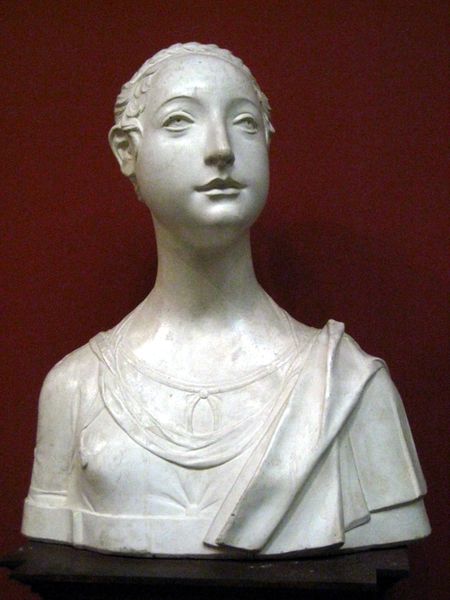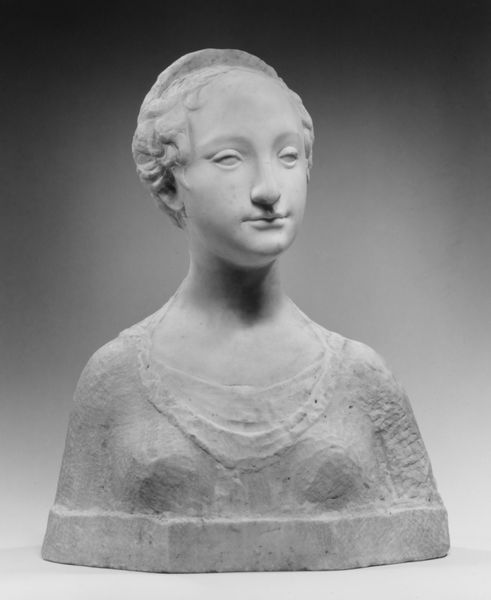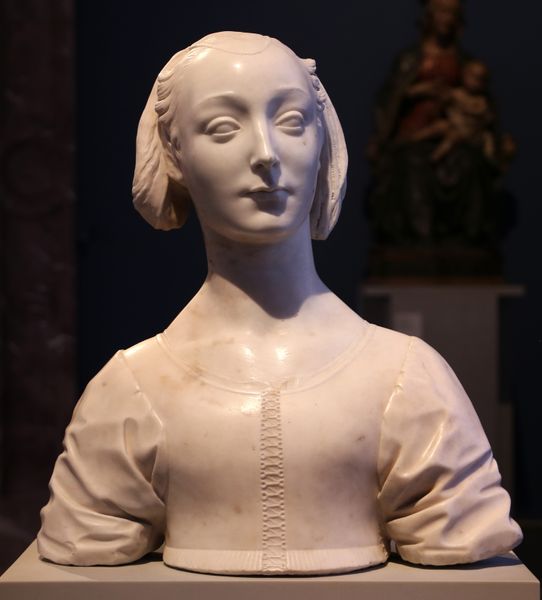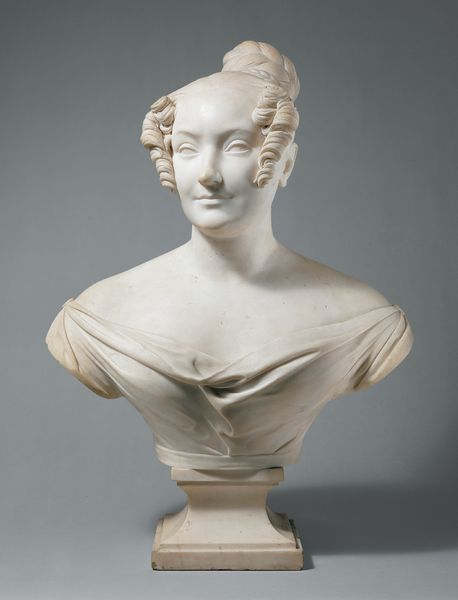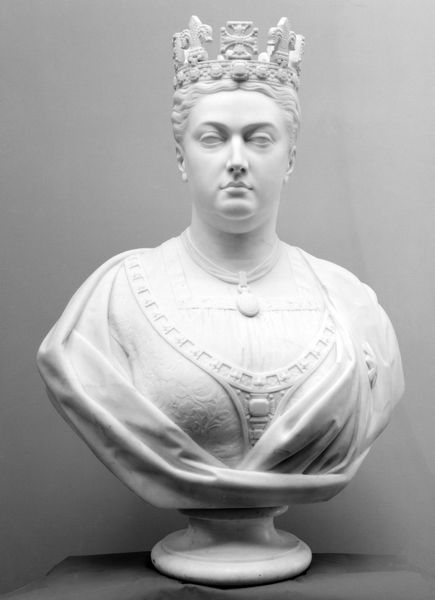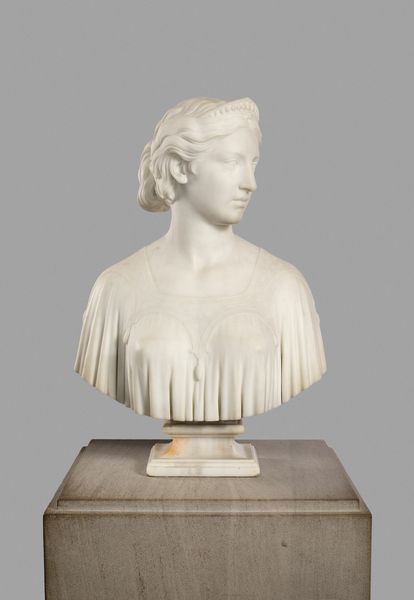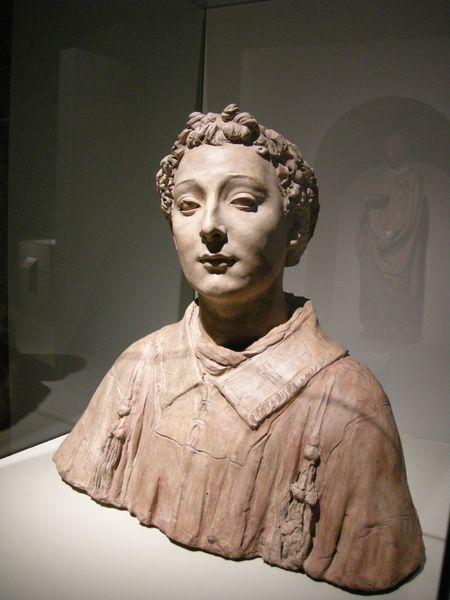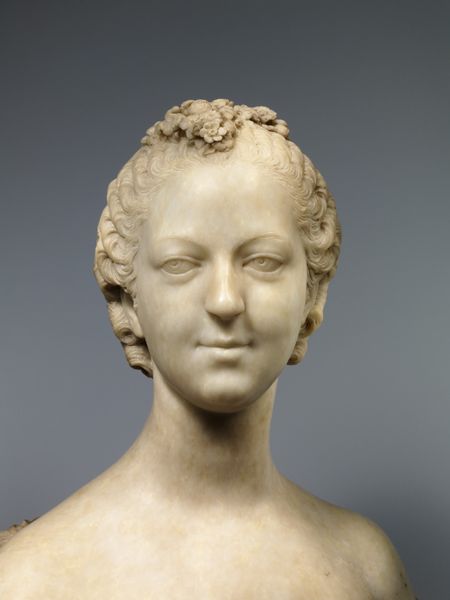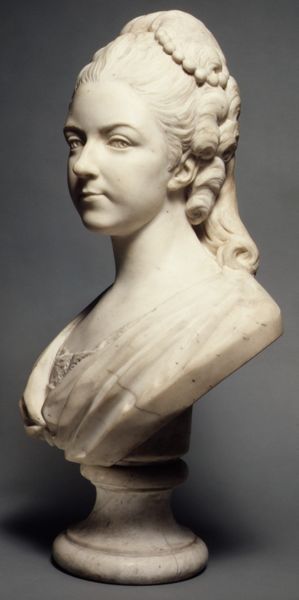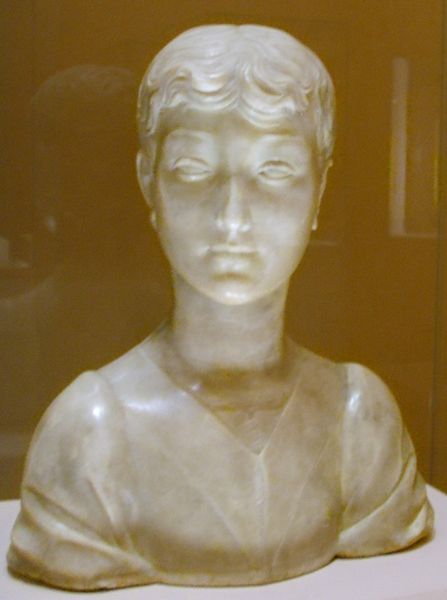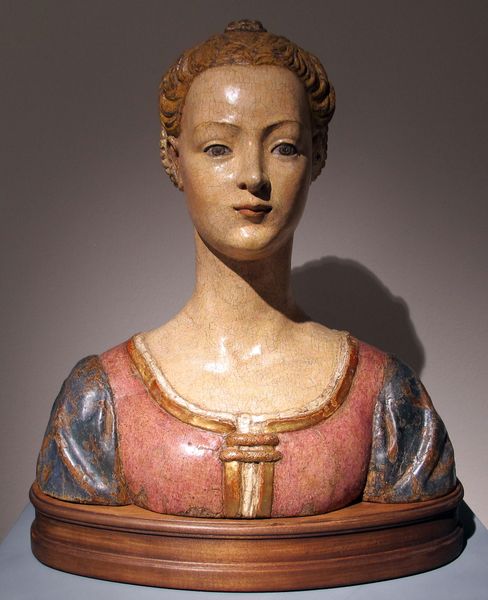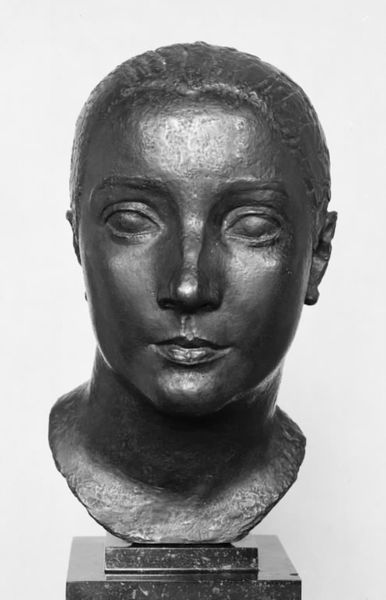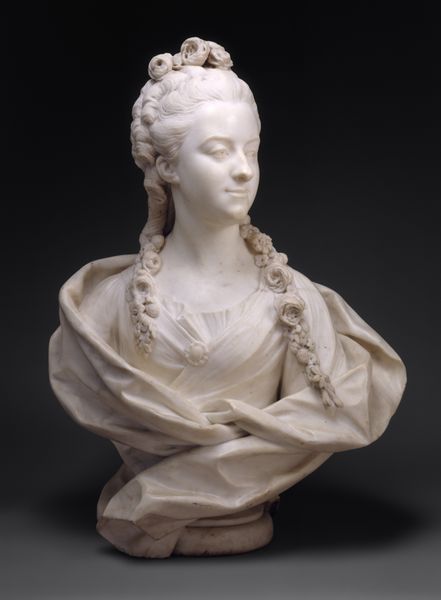
sculpture, marble
#
portrait
#
statue
#
sculpture
#
figuration
#
sculpture
#
marble
#
italian-renaissance
#
realism
Copyright: Public domain
Editor: This is Andrea del Verrocchio's "Una Fanciulla," a marble sculpture from around 1485. I'm immediately struck by its serenity and the way the light catches the smooth marble. How do you interpret this work within its historical context? Curator: This sculpture exists at the intersection of the burgeoning Renaissance humanist ideals and the patriarchal structures that governed 15th-century Florence. Verrocchio's skill renders a compelling likeness, but it's also important to consider whose likeness gets immortalized and why. Can we assume the subject consented? What does this tell us about agency, gender and representation during the Italian Renaissance? Editor: That’s a really interesting point! The idea of whose stories are told and by whom...it really makes you consider the power dynamics at play. Do you think there's a commentary being made on those structures within the piece itself? Curator: The sculpture arguably embodies an idealized image of feminine beauty and virtue, adhering to societal expectations rather than subverting them. However, the slight knowingness in her expression could hint at more depth beneath the surface, or perhaps that’s simply my hope for a break in these social confines. Do you notice anything else that speaks to that? Editor: Now that you point that out, it is hard to dismiss this look of defiance in her eyes... Well, thank you, this has really broadened my understanding! Curator: It's crucial to actively engage with art from diverse perspectives and to acknowledge the often-unacknowledged influences that frame our perception. It is important for people to remember these are real people and not just objects frozen in time.
Comments
No comments
Be the first to comment and join the conversation on the ultimate creative platform.
